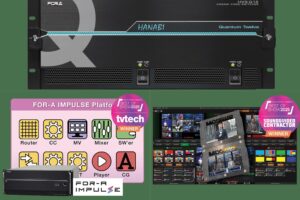While drivers and passengers still need vehicles to get to their destination, other parts of driving experiences across the world are changing fast. The ‘driving’ factor in this change is reliable and robust connectivity. Automakers are embracing connectivity and adapting business strategies to remain competitive as consumers demand better connected-vehicle experiences. A new Ericsson report provides insights into this rapidly changing market, highlighting opportunities to capitalize on IoT and connectivity innovation.
With the connected car market forecasted to reach revenues of USD 166 billion by 2025 (Statista), Ericsson’s report – Connected Cars: Succeeding in the midst of economic and societal transformation – takes a closer look at the major challenges, solutions and use cases as automotive Original Equipment Manufacturers (OEMs) reassess their value to customers.
The report also highlights how new market players are proving that a big brand name alone may not be enough to retain customer loyalty and market share.
By capitalizing on cellular connectivity IoT, smart over-the-air (OTA) updates can offer cost savings of up to 87 percent (according to Stout’s 2019 Automotive Defect and Recall report) for the baseline automotive OEM described in the report.
Instead of physically driving the car to a dealership or service center for software updates, they could be done remotely, saving time and money. Optimizing data transfer to off-peak periods will also be more cost-effective as OEMs will be able to take advantage of discounts.
Smartly managing connectivity and subscriptions is another way for OEMs to meet drivers’ expectations of being fully and seamlessly connected on the road, regardless of location.
The cost of installing a fixed SIM, like those found in most mobile phones, is 10 times greater than updating an embedded SIM (eSIM) – a programmable SIM card.
This eSIM capability gives the industry better flexibility in controlling costs, while providing a better experience for consumers as it would remove the complexities consumers may face if car journeys cross multi-CSP run networks or cross border travel. An embedded eSIM would automatically handle all such requirements without the need for changing or updating cards dependent on the scope of the journey.
Tapping the intelligence from car data is another opportunity for auto OEMs. According to the report, the overall global revenue pool from car data monetization could range from USD 450 billion to USD 750 billion by 2030.
Kyle Okamoto, General Manager, Ericsson IoT, says: ”Automakers need to strategically consider the future of their business and capitalize on an evolving ecosystem of technology companies, information and entertainment companies, suppliers and many more players who are progressing innovation around the Internet of Things. This interesting report outlines how automakers can adapt and succeed in the market.”












